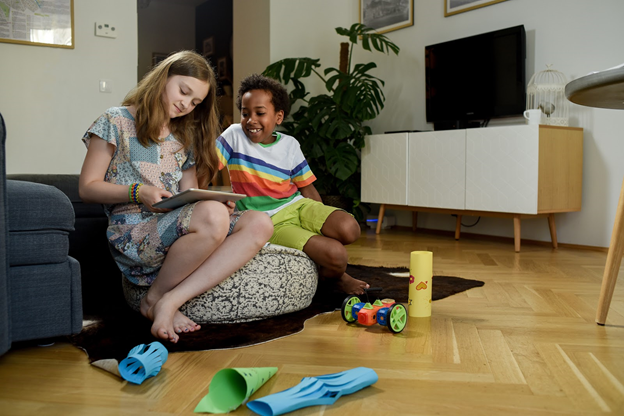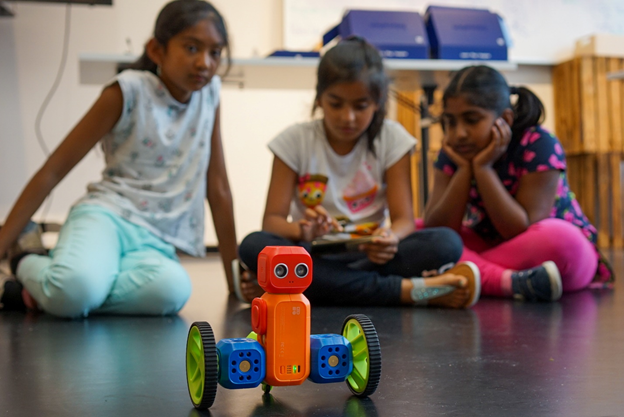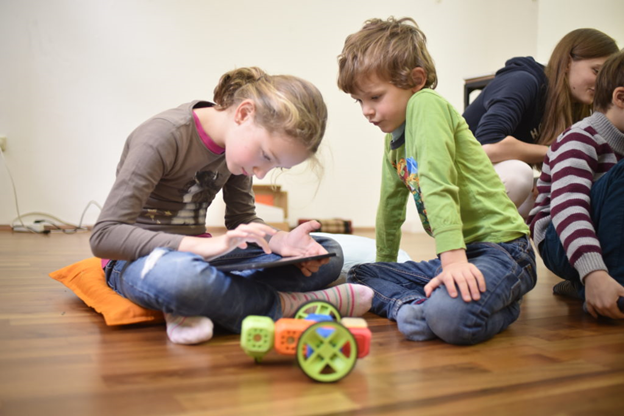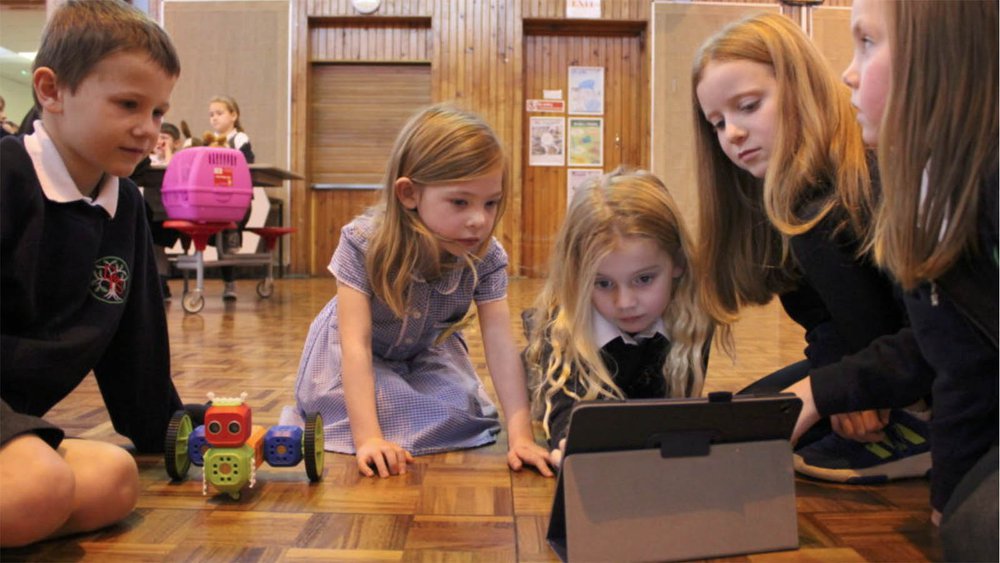The rampant digitalization of our society has touched and fundamentally altered all domains of our lives, including education. What was once enough to prepare pupils for their adult life is no longer sufficient, and we urgently need to implement the new developments we see around us into school curricula. One of these new developments is the increased use of robots in everyday life––from vending machines to your automatic vacuum cleaner, all the way through to artificial intelligence and heavy machinery. But the field of robotics has more benefits for children than just teaching them about robots.
My blog, a part of the Robo Wunderkind educational platform, focuses on the value that robotics and programming––two fundamental areas of STEM––bring to early education. From our experience with teaching children, we value the play-based approach that emphasizes the value of teaching through real-life situations, allowing children to learn from their mistakes as they attempt to make an inanimate object carry out their commands. Reflective observations, creative conceptualization, and active experimentation with ideas let children exercise their abstract thinking and use it to solve real problems. This further serves as an arch to them learning from their experience. This circular process includes making mistakes, learning from them and consciously avoiding them in the future.
Furthermore, the use of robotics in lessons encourages independent thinking in students. While they are given a task to fulfill with their robotics tool, the road through which they choose to arrive at their destination is left up to them. Through the trial-and-error process, they simmer their ideas down to only those that work––those that they themselves have seen work. This process further empowers them to have confidence in their own problem-solving skills and curiosity, having successfully implemented them in a problem situation. This, in turn, also enhances their creativity and imagination, as current research suggests that creativity is a skill one can learn rather than an inherent part of a child’s genetic code.
While the general consensus is that computers and robots can learn from us as humans, the opposite is also true. Computational thinking, a process of solving problems through the development of useful algorithms that we sharpen and perfect through repetitive trials is something computers do incessantly, and something children can learn from their robotic friends. Then there is also design thinking, which means trying to find a practical solution to a problem that the user will like. Not only is this an instinctive process (after all, does anyone want to do something they don’t like?) but it is a very useful aspect when designing anything––be that a tool, software or a program. Both design thinking and computational thinking are easy to learn with the help of robotics.
There are also several practical issues, or side effects, that robotics can help alleviate. First, the gender gap in STEM. Reports suggest that if we wish to increase the numbers of women in STEM, we need to incite passion for the field in girls (and boys) alike starting at a young age through good education. If we teach both girls and boys the same things (coding and robotics) with the same amount of passion, we can expect both genders to develop an affinity towards the activities. Second, robotics encourages a sense of digital citizenship. The generation of today’s young children is one of digital natives. They see little distinction between the physical and virtual world and will work intensely with technology throughout their whole lives. Thorough STEM education (of which robotics is an integral part) is the only thing that can cultivate a healthy relationship with digital technology within them.
And last, if teachers find themselves thinking “robotics isn’t for me, after all, I’m not a computer science teacher,” we have good news. Robotics encompasses the cross-disciplinary educational approach to education perhaps better than any other field. As an example, our curriculum uses robotics to not only teach the basics of STEM, but also maths and arts, two very different disciplines. Whatever you are teaching, you can do so with the help of robotics. This only shows that robotics is a solution, not a field per se, and certainly not a problem.
In short, including robotics in your class’ curriculum is a win-win. Besides the plethora of educational benefits this discipline has in store for early education, it can also––and perhaps most importantly––bring a huge amount of fun into the classroom.





About the Author
Anna is the CEO & co-founder of the tech-ed company Robo Wunderkind, which seeks to empower children by teaching them the basics of STEM with the help of their award-winning robotics kits, 2 free intuitive apps and 70+ hours of an international curriculum. Originally from Ukraine, Anna studied at the prestigious London School of Economics and University of Vienna, then worked for 10 years in business and aid development across Europe and Asia before funding her own business. Today, she lives in Vienna and leads a team of 20 professionals from across the world.











